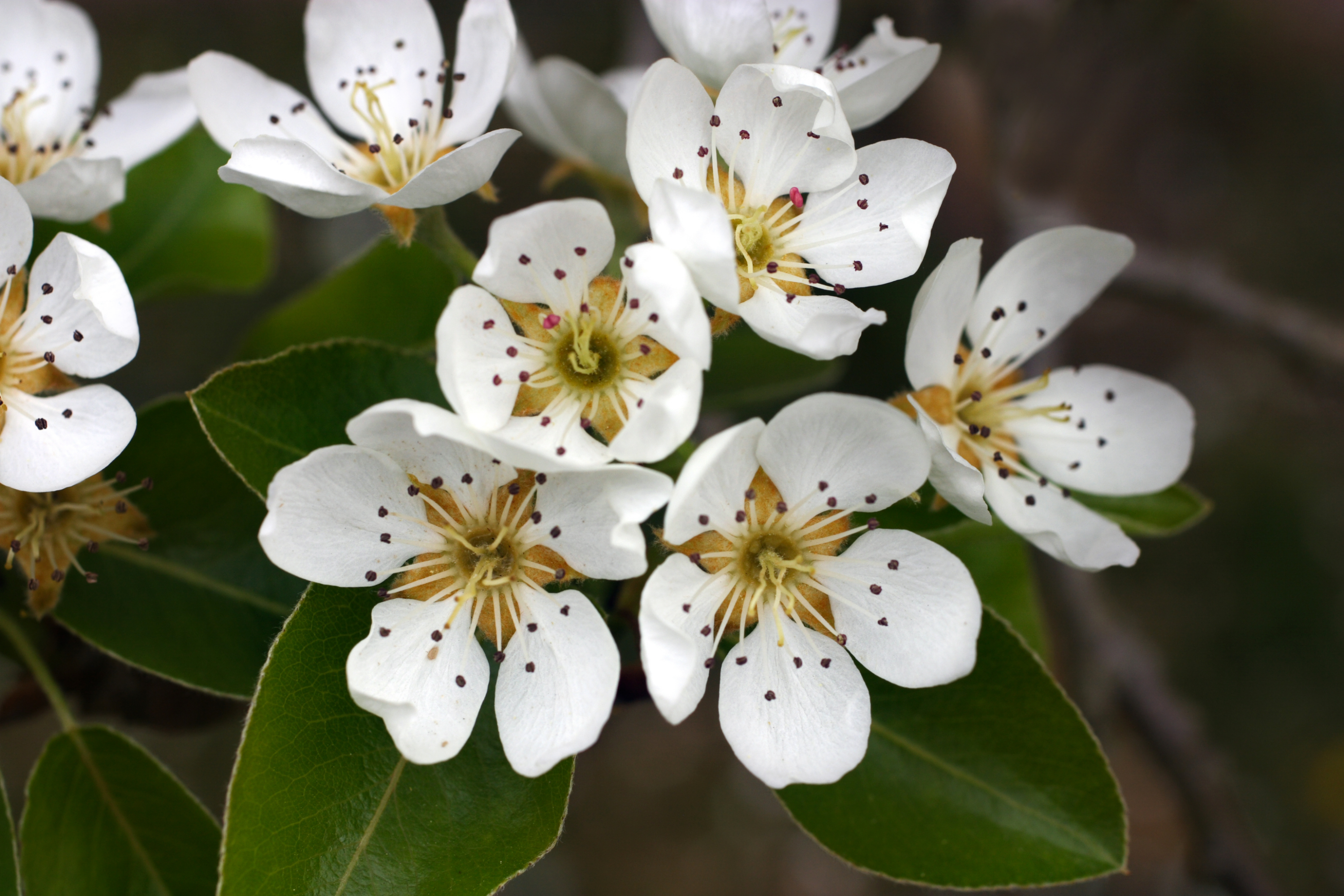Callery pear
(Pyrus calleryana)

Description
Pyrus calleryana, commonly known as Callery pear or Bradford pear, is a deciduous flowering tree that belongs to the Rosaceae family. It is native to China, Vietnam, and Korea and is widely cultivated as an ornamental tree in many parts of the world, including North America, Europe, and Asia. Callery pear is a fast-growing, hardy, and low-maintenance tree that has attractive foliage, abundant flowers, and colorful fruit. It is often used as a street tree, landscaping tree, and windbreak tree. Description: The Callery pear tree can grow up to 40 feet tall and 30 feet wide, with a pyramidal shape and a dense crown. It has a straight, gray-brown trunk that is smooth when young but becomes rough with age. The branches are slender, angled upwards, and densely covered with dark green, glossy leaves that are ovate or elliptical in shape and 2 to 4 inches long. The leaves turn a brilliant red or purple color in the fall before dropping. The Callery pear tree produces small, white or cream-colored flowers in the early spring before the leaves appear. The flowers are borne in clusters of five or six, and each flower is about 1 inch in diameter, with five petals and numerous stamens. The flowers have a sweet fragrance and attract bees, butterflies, and other pollinators. After the flowers, the tree produces small, round, green fruit that matures to yellow or reddish-brown in the fall. The fruit is about 1/2 inch in diameter and is edible but not commonly consumed due to its gritty texture and astringent taste. Varieties: There are several cultivars of Pyrus calleryana, including the popular 'Bradford' pear, which was first introduced in the United States in 1963. The 'Bradford' pear is a fast-growing, upright tree with a dense, symmetrical crown and attractive white flowers. However, it is prone to structural weaknesses, such as splitting and breaking, which can make it a hazard in storms. As a result, many cities and homeowners are replacing 'Bradford' pears with other, stronger cultivars. Other popular cultivars of Pyrus calleryana include 'Aristocrat,' 'Chanticleer,' 'Redspire,' and 'Capital.' 'Aristocrat' is a vigorous, upright tree with a pyramidal shape and excellent fall color. 'Chanticleer,' also known as 'Cleveland Select,' is a narrow, columnar tree with a symmetrical crown and white flowers that are larger than those of other cultivars. 'Redspire' is a fast-growing, upright tree with red-colored new growth in the spring and a bright red fall color. 'Capital' is a narrow, upright tree with a very tight, dense crown that is ideal for planting in narrow spaces. Cultivation: Pyrus calleryana is a hardy tree that grows well in a wide range of soils, including clay, loam, and sand. It prefers well-drained soils and full sun but can tolerate some shade. It is tolerant of drought, pollution, and heat and is resistant to most diseases and pests. The tree is propagated by grafting, which involves joining a stem or bud from a desirable cultivar onto the rootstock of a related species. This ensures that the resulting tree will have the desired characteristics of the cultivar, such as size, shape, and flower color. Pyrus calleryana is a fast-growing tree that can grow up to 3 feet per year under ideal conditions. It should be pruned regularly to maintain its shape and to remove any dead or damaged branches.
Taxonomic tree:







